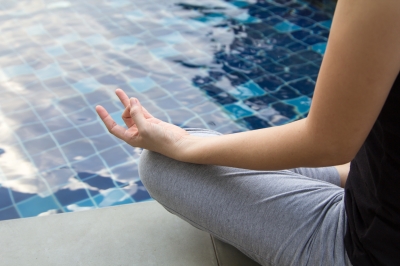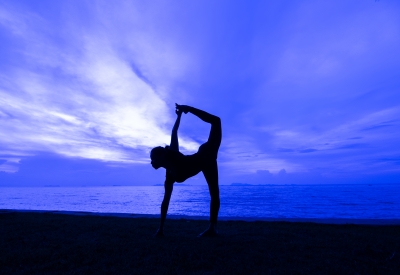Meditation was first documented around 1500 years ago in ancient India. In 1958, Jack Kerouac published The Dharma Burns, which explored his early experience with Buddhism and increased interest and curiosity in meditation. Up until the early 2010s, meditation was still considered too "new age" for the everyday person. In 2016, everybody seems to be talking about meditation - more specifically mindfulness meditation.
Even in the daily craziness that bombards us from every direction, there is — still — the constancy of stillness. Only from that space can you create your best work and your best life. - Oprah Winfrey
There are numerous examples of highly successful people who meditate daily: Oprah Winfrey, Tim Ferriss, Ariana Huffington, Tony Robbins, Ray Dalio and Marie Forleo.
Benefits of meditation
Scientific research carried out over the last 20 years have reported the following benefits of regular meditation:
1. Increased immune function. The American Psychosomatic Society shared a study that examined the impact of an 8-week training programme in mindfulness meditation on brain activity and immune function. Using one group of 25 individuals who practised meditation for eight weeks and a wait-list control group of 16 who did not practise meditation, the researchers vaccinated all individuals with the influenza vaccine. In the group of meditators, they found significant increases in antibody titers to the influenza vaccine compared with those who didn't meditate.
2. Decreased stress. In a study of healthcare professionals, researchers measured the effects of a short-term mindfulness-based stress reduction (MBSR) programme. Results from the pilot suggest just eight weeks of MBSR may be effective in reducing stress and increasing quality of life and self-compassion in healthcare professionals. A similar study with cancer patients found that MBSR decreases mood disturbance and stress symptoms.
3. Increased emotional intelligence. Pracitising a loving-kindness meditation increases experiences of positive emotions, which increased mindfulness, purpose in life, social support and decreased illness symptoms.
4. Increased focus and attention. Using an 8-week MSBR course, researchers found that mindfulness training may improve attention-related behavioral responses by enhancing functioning of certain parts of the brain that manage our attention.

One year of meditation
Having only recently developed a meditation habit, I have noticed several changes in my physiology:
1. Reduced heart rate. I wear a FitBit Surge. Before I start meditating, my heart rate is usually around 65 beats per minute. I meditate for 10-20 minutes twice daily (as soon as I wake up and before I go to sleep). After a 10-minute meditation, my heart rate goes from 65 beats per minute (bpm) to 60 bpm, but after 20 minutes it drops to 55 bpm or lower. I've also noticed that during the weeks that I meditate less than twice daily, my resting heart rate is around 65 bpm vs. 53 bpm when I meditate more frequently.
2. Improved sleep. After multiple failed attempts to practise meditation, I tried meditating before going to sleep. I used a guided meditation by Tara Brach. It doesn't always work, but when it does, I find I can't even finish the guided meditation because I'm already half-asleep. On several occasions, I've woken up in the morning still wearing my earphones having nodded off halfway through the meditation.
3. Fixed writer's block. I mostly use a walks or household chores to help me with writer's block, but when I've used meditation, I find that it helps me reorganise my thoughts and think more clearly about the impact and purpose of my writing.

How to start meditating
One of the biggest misconceptions of meditating is that you have to do it sitting down with your eyes closed and cross-legged with the backs of your hands resting on your knees. Another misconception is that the aim of meditation is to clear your mind and if you don't clear your mind, your meditation has been unsuccessful.
Think of your mind as a muscle, like your heart. Don't be discouraged if you don't feel the benefits of meditation immediately.
I've tried starting a regular meditation practice about five times over the last 10 years. Only in the last 12 months have I established what works for me. This is the step-by-step guide that I wish I had when I started:
0. Figure out your why. If you're only interested in meditation because you've heard about all the benefits, it'll make it harder to stick to practice. Instead, ask yourself: What problems or issues do I want to address through regular meditation?
For me, it was an attempt to help me switch off at night and start the morning calmly.
1. Try sitting still for 2 minutes. Launching into meditation with a 30-minute practice at 6am is going to be overwhelming. Simplify by taking just 2 minutes today to sit quietly. Don't worry about clearing your mind. Just sit quietly, without anyone else, without looking at your phone. Close your eyes and breathe deeply. See how long it takes before you feel like opening your eyes and getting on with the rest of your day.
2. Focus on meditating for short spans of time. Increase your time meditating incrementally. Make it hard not to practice. Commit to sitting still for 2 minutes on Monday and then 5 minutes on Friday. Reflect on whether your two sessions were successful and why. Use this information to plan your sessions the week after.
3. Use your favourite song. You already experience positive emotions when you listen to your favourite song, so use that ingrained response by sitting still for the length of your favourite song. You can focus on the lyrics, on your breathing or just gently hum along to it. Either way: you're focusing on the song and less on the act of meditation, but the key thing is you're focusing on one thing. Unless your favourite song is Bohemian Rhapsody, listening to your favourite song can help you meditate for at least 3 minutes.
4. Use a guided meditation for regular practice. Try out the following for guided meditation. I found it much easier to practice twice daily when I used guided meditation:
- Tara Brach has a series of beginner's guided meditations and guided meditations for more advanced meditators. Her guided meditations last between 10 and 25 minutes.
- You can also try the Headspace app.
- Sam Harris is a neuroscientist and author who has produced 9-minute and 27-minute guided meditations.
5. Practice in different environments. Although I mostly meditate by sitting in bed, I've also meditated on a busy and rickety Tube train in London, on a bus, at the airport gate and while walking. Being on the go is no excuse! You can always find 2 minutes to meditate anywhere.
6. Practice in different positions. Some argue that sitting instead of lying can help prevent you falling asleep, which is true for me, but sometimes I want to use meditation to fall asleep so lying down makes the most sense. As mentioned above, meditation doesn't have to be done in a static position. You can meditate while you walk by focusing on your breathing and being aware of your mind as it drifts into the past and the future. Focus on bringing it back to the present - where you are now and what your physical and emotional sensations are in this moment.
7. Make regular iterations to your practice. Experiment, experiment and experiment. What works for me won't necessarily work for you. The key is to figure out what works for you and what is appropriate for your lifestyle. Be patient with meditation. Think of your mind as a muscle, like your heart. Don't be discouraged if you don't feel the benefits of meditation immediately. The benefits of physical exercise don't often appear until after six weeks of regular practice. Remember this each time you think that meditation isn't working for you. Adapt your practice and reflect on what did and didn't go well after each session.
8. Remind yourself why you're doing this. If, after six weeks of regular practice, you don't feel any benefits, think back to what you wanted meditation to achieve in the first place. Be critical of your practice over those six weeks: did you really give it your best shot?
Achievement without appreciation is a Pyrrhic victory, and mindfulness helps cultivate appreciation. - Tim Ferriss

Images courtesy of tiverylucky, arztsamui and samuiblue at FreeDigitalPhotos.net.
If you enjoyed this post, you might like: